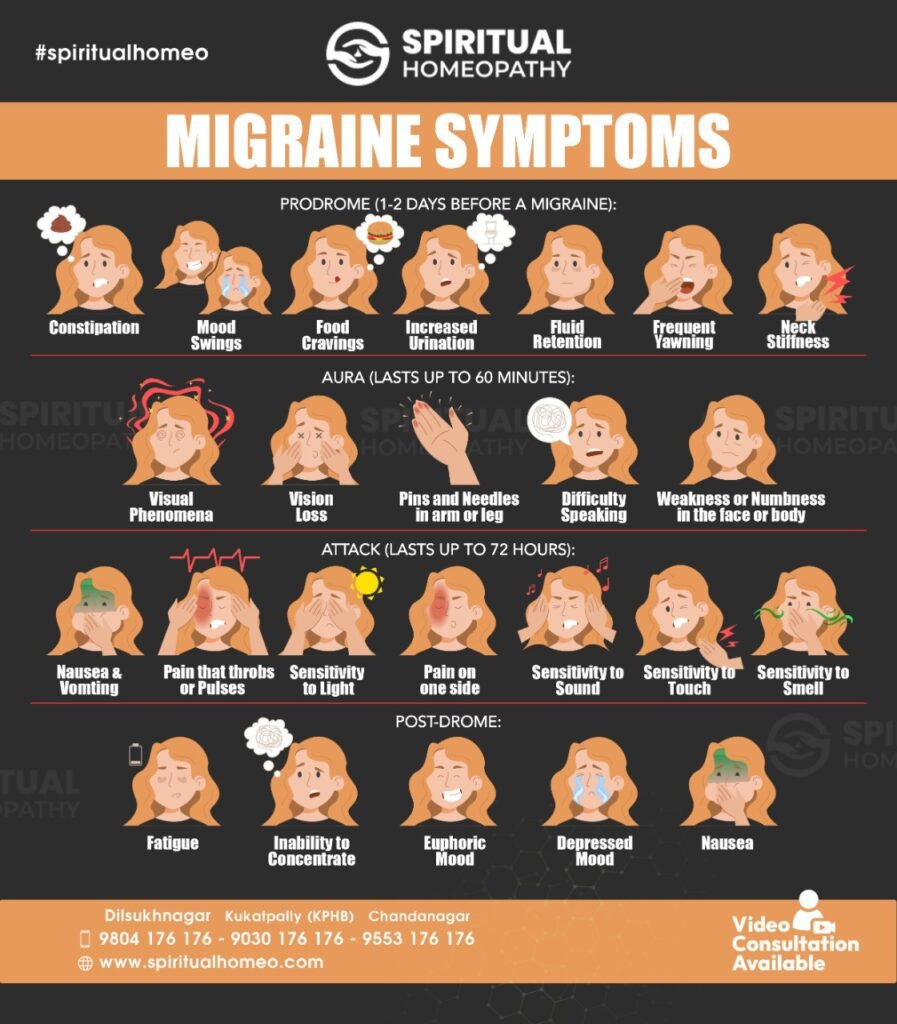Migraines are a type of headache disorder characterized by recurrent, intense headaches that often occur with other symptoms. Migraine symptoms can vary from person to person, and the four main phases of a migraine attack include prodrome, aura, headache, and postdrome. Not everyone with migraines will experience all four phases, and some individuals may only experience one or two of them. Here is an overview of common migraine symptoms for each phase:
Prodrome (premonitory phase):
- Mood changes (irritability, depression, euphoria)
- Food cravings
- Fatigue
- Increased thirst and urination
- Neck stiffness
Aura (not everyone with migraines experiences this phase):
- Visual disturbances (flashes of light, blind spots, zigzag lines)
- Sensory changes (tingling or numbness in the face or hands)
- Speech difficulties
- Muscle weakness
Headache:
- Throbbing or pulsating pain, often on one side of the head
- Sensitivity to light (photophobia)
- Sensitivity to sound (phonophobia)
- Nausea and vomiting
- Blurred vision
- Lightheadedness
Postdrome (recovery phase):
- Fatigue
- Weakness
- Confusion
- Mood changes (elation or mild depression)
- Scalp tenderness
It’s important to note that the severity and duration of migraine symptoms can vary. Some people may experience migraines infrequently, while others may have them more frequently. If you suspect you have migraines or are experiencing severe headaches, it’s advisable to consult with a healthcare professional for a proper diagnosis and management plan.




